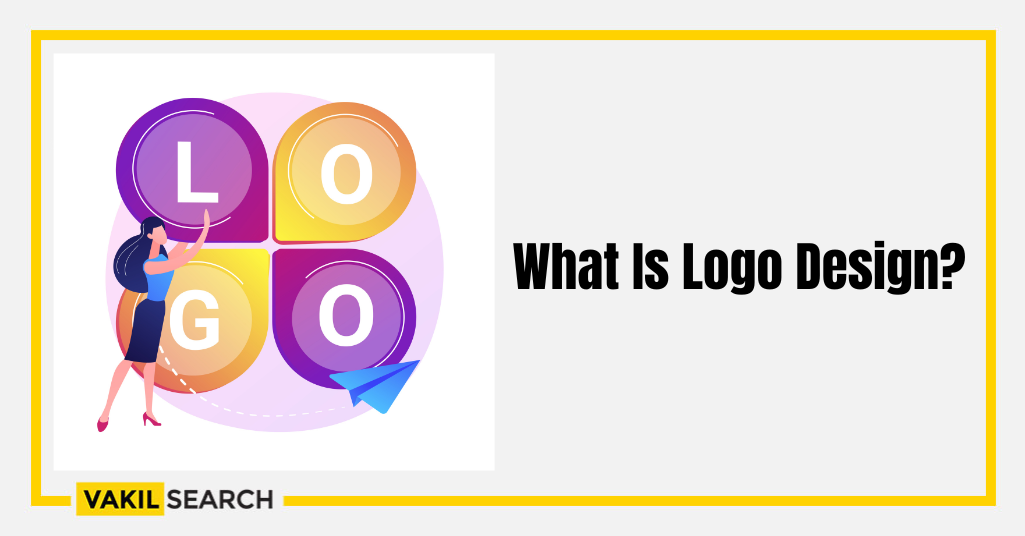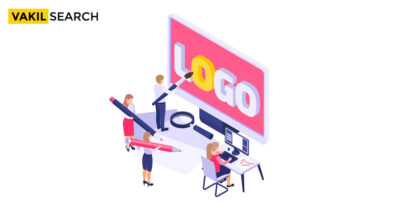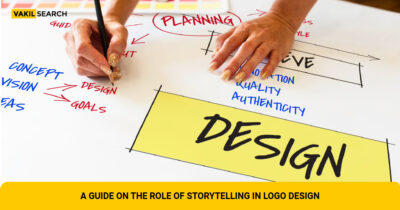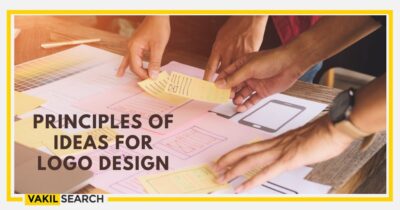This blog is a valuable source to understand everything about designing a logo for you business.
A logo is an important part or graphic used to distinguish a business or an Organisation, including its goods, service, and workers, among other things. A logo, in its most basic form, distinguishes. It’s how people will remember and identify your business. It also serves as the public face of your company. Your logo can also serve as a platform for making a statement regarding your company. You need to have Logo Design for making your brand grow. In this blog we’ll learn about What is the Logo Design Process.
Four Common Types of Logos
Logos come in various forms, each with its unique attributes and purposes. Here are four common types of logos that businesses often consider:
Lettermark Logos: In these logos, only the initials of the brand are used. This is useful for companies with long names. Examples include HCL and NASA.
Combination Logos: As the name suggests, these logos combine both text and a symbol. This provides the flexibility to showcase the brand’s name and a visual representation. Taco Bell and Microsoft use combination logos.
Wordmark Logos: These logos feature the company’s name in a stylized font. They emphasize the brand’s name, making it memorable and easy to recognize. Examples include FedEx and Coca-Cola.
Symbol or Icon Logos: Symbol logos use a distinctive image or symbol to represent the brand. This image becomes associated with the company over time. Think of logos like Nike’s swoosh.
What are the Elements of a Logo?
A good logo typically consists of several key elements, including:
Icons or Symbols: This is a graphical element that represents the brand visually. It can be an abstract shape, a letter or an image.
Typefaces: This is the font or typeface used for the brand’s name or slogan in the logo.
Colour Schemes: The choice of colours in a logo can convey emotions, values, and brand identity.
How is a Logo Different from Branding?
A logo is just one component of a brand’s visual identity. Branding encompasses the entire perception of a brand, including its values, mission, messaging, design elements and the overall customer experience.
What Makes a Logo Stand Out?
A logo stands out when it:
- Distinguishes the brand from competitors
- Leaves a lasting impression
- Works across various mediums and sizes
- Remains relevant and effective over the years
- Aligns with the brand’s values and industry
What are the Different Uses for a Logo?
A logo has multiple applications that can help boost your brand’s visibility and recognition. It can be used in branding, marketing materials, websites, social media, products, packaging, signage and official correspondence such as business cards and letterheads. Your logo is a visual representation of your brand and it can make all the difference in your business’s path to success.
Some of the Examples of Logos
Apple: The iconic apple with a bite taken out of it.
Nike: The swoosh symbol.
McDonald’s: The golden arches.
Coca-Cola: The distinctive cursive font and red colour.
Google: The colourful “G” symbol.
What to Consider When Choosing a Logo?
Selecting the right logo is crucial for your brand’s identity. Here are some key factors to consider when making your decision:
Simplicity: A simple logo is memorable and versatile, making it easier for people to recognize and remember your brand.
Scalability: A good logo should look great whether it’s on a business card or a billboard. It should be easily scalable without losing its clarity.
Colour and Typography: Choose colours and fonts that align with your brand’s personality and message. Colours evoke emotions, and typography adds to the overall vibe.
Logo Design Process Online
When it comes to designing a logo, there are two factors to keep in mind
- Design entails a great deal of planning. Yes, you will be required to develop a graphic. However, most work set at the start is tactical. Ready to plan and make decisions in addition to drawing.
- You aren’t just creating a logo. Note that the logo is simply one component of a more comprehensive visual cortex, and all components must work properly.
- You’ll need to work in stages to get this perfect. While each designer’s process is unique, the one we’ll be guiding you through comprises five stages:
- Discover
- Explore
- Design
- Refine
- Define
Phase 1: Identify a Goal
The “query” phase is part of the discovery process. Architects use this period to elicit as much history and context as possible to thoroughly comprehend their client’s firm or company, including its beliefs, industry, brand qualities, etc.
This is also the opportunity to ask pre-design questions regarding the intended appearance and feel, all potential utilization, and any critical necessity or special requests.
This would be a moment of self for yourself. You aim to provide a firm grasp of what your corporation is, what you stand whatever you want to achieve, and how you plan to get there. You’re not merely creating a logo design. You’re forming the identity of your company.
Phase 2: Investigate
This is the stage of your research, but “adventure” seems more thrilling. And it will be, we assure you. The inductive research approach may be the most enjoyable and beneficial for somebody going on this construction process alone and potentially for the first day.
In essence, you’ll be focusing your attention outward to meet and study architecture in the real world. Your objective is twofold: Educate yourself and be inspired.
Phase 3: Design
Awesome! The goal is simple: combine all the factors and data from the previous two stages and create logo concepts.
When thinking about how to create a logo, there are many things to consider: It’s a good idea to start by sketching some early thoughts. Don’t make it too difficult for yourself. Iterative design is a method of creating anything. Create crude sketches of the concepts in your thoughts, even if you don’t think you can paint. Your mind will be compelled to think about precisely what you require outside the box.
Many internet-based technologies will get the task done if you’re strapped for time, cash, or design abilities. Most of these websites provide customizable designs, which is the quickest method to make a logo that looks professional.
You may need to consider whether you use a sign in your logo, either conventional or creative. Here are some pointers from our designers on how to make a symbol that fits your brand:
1. Connect the dots. Consider the name of your firm or group and jot down as many similar words as you want. For example, we’d write phrases like developing, gardening, tree, woodland, leaves, limbs, greenhouses, etc. These words bring up various pictures, which might be used as a brand logo.
2. Use metaphors in your thinking. That’s where the “Explore” phase’s queries play a part. Returning to our eBay instance, the smile indicates the happiness and satisfaction of Amazon customers.
3. Be as literal as possible. While the architects advised against sticking with the most sensible alternative, a direct depiction of your brand statement is still an option. Try things with it. Combine a literal sign with a more symbolic symbol.
4. Be strange. There have been no rules at this point. Go as far as you would like outside of the cage. As the adage goes, this is where the fun usually starts. If it doesn’t sound right, don’t debate it. It might be the key to unlocking the winning concept.
Phase 4: Refine
If you have multiple possibilities at the end of the previous phase, now is the time to limit them. Have you made up your mind? Great! Let’s see how well it works. Contemplate your direct and indirect use cases, such as your website and social media pages, printed promotional materials, recruiting and events posters, etc.
Don’t just think about it. Mock it up on various backdrops to ensure that the image, wording, and overall message are consistent across all platforms. Any logo sign should work in various sizes, but compact digital uses are essential.
You will then have a finished brand design that you like. And you likely spent a significant amount of time perfecting every detail. Our fifth and final phase will assist you in ensuring that it remains thus. Even you can make the Trademark Application Process look smooth.
Phase 5: Define
- Quality and reliability are crucial when it comes to keeping the authenticity of your brand image. Given the number of ways your logo will be used—and the number of people who will need to utilise it—critical it’s to establish a set of rules and regulations for how to handle it.
- To begin, consider any restrictions for the size, colour, design, treatments, placement, and orientation of your logo.
- A stylebook is a term used to describe this. A stylebook can be as basic or as detailed as you require. The Design Stability control just created a whole webpage dedicated to our stylebook.
- Roots are the name of the folder that contains all of our branding, language, and aesthetic standards, including all of the designs and elements that our design engineers will need to construct our software.
However, you don’t have to create an entirely new site to contain your brand guidelines. Ensure that they are well-communicated to your staff and freely available to all. Most designers develop a pdf and upload it to their industry’s or company’s inner resource repository.
How to Get a Logo?
Crafting a remarkable logo is pivotal for establishing your brand identity. Vakilsearch offers a comprehensive suite of services to create, protect, and elevate your brand through logo design, logo trademarking, and company name registration.
Stage 1 – Envision your brand’s essence brought to life with a custom logo tailored exclusively to your identity.
Stage 2 – Our professional design team collaborates closely with you to grasp your vision, values, and goals.
Stage 3 – We then transform these insights into a one-of-a-kind logo that resonates with your target audience and sets you apart from competitors.
Elevate your brand’s visual identity with Vakilsearch’s holistic approach to logo design, trademark protection, and company name registration.
Conclusion
“Wow, that was a bunch,” you would think after all that. We understand the concern. And we said that creating a logo takes a lot of time; we were just not kidding. Designers usually take weeks to finish all of the steps. So, here’s our final advice: don’t hurry. Take your time to complete the exercises listed under each step. Your final version will reflect how much effort and time you put into it. logo design is an essential aspect of branding and marketing for any company or organization. For designing your logo online, you can always get in touch with the experts of Vakilsearch.
FAQs
1. What role do fonts or typography play in logo design?
Fonts or typography play a crucial role in logo design as they can convey the brand's personality, values, and tone of voice. The right font can make a logo more legible, memorable and visually appealing. Typography can also be used to create a unique and distinctive logo that stands out from the competition.
2. What's the difference between a logo and a brand emblem?
A logo is a visual representation of a brand or company, while a brand emblem is a symbol or icon that represents the brand's values, personality and identity. A brand emblem can be used in conjunction with a logo or as a standalone element in a company's branding strategy.
3. What are the common mistakes to avoid in logo design?
Some common mistakes to avoid in logo design include: Using too many colours or fonts Creating a logo that is too intricate or difficult to read Copying other logos Ignoring target audience and brand personality.
Also, Read:









